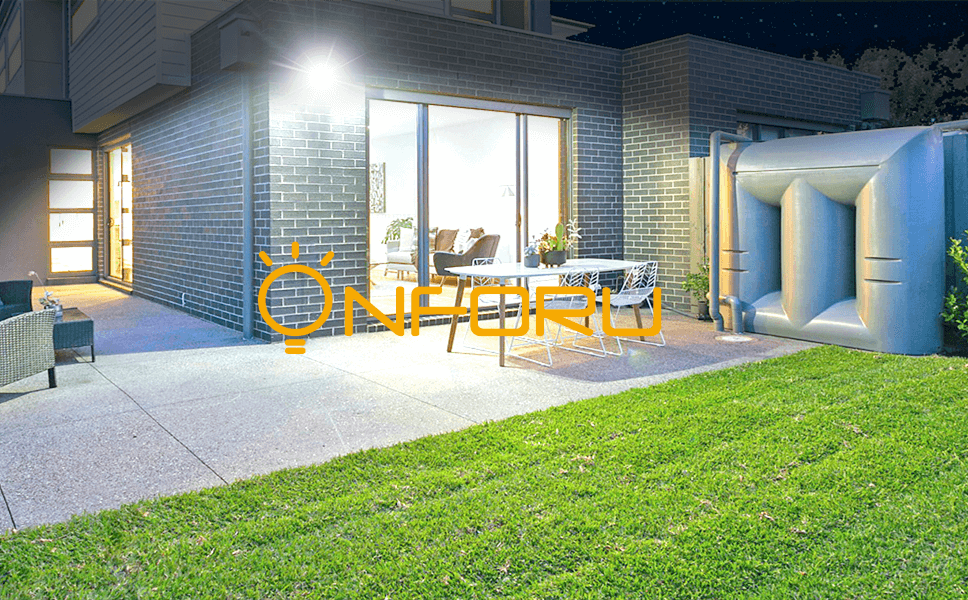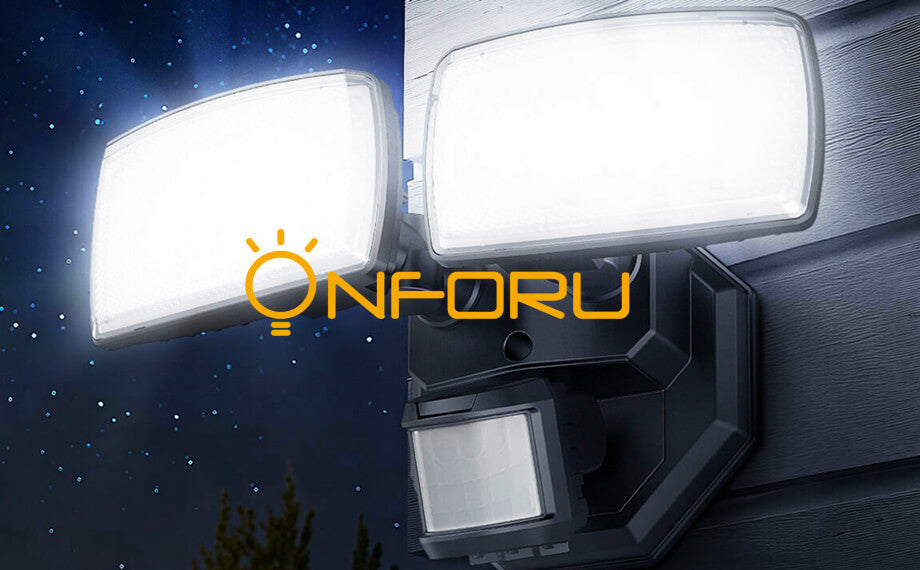What is LED Sensor Light - Everything You Should Know

LED sensor lights can be hung in entryways and on walls for everyday lighting or for emergency use in the event of a power outage, making them more useful in everyday life.
Recently, many communities have installed sensor lights in their hallways, corridors, courtyard front doors and garages, as they are designed for specific applications to avoid the waste of resources caused by people forgetting to turn off the lights or the tedium of switching them on and off manually.
Principle of LED Sensor Lighting
The sensor light is an innovative lighting product that can be switched on and off without contact by means of sensor parts, which can provide better energy saving and efficiency reduction than traditional human-switched lighting.
Classification of LED Sensor Lights
1. Infra-red LED Lights
The infrared sensor light controls the luminaire by receiving infrared rays from the human body. The body temperature of the human body is kept constant while also sending out infrared radiation to the outside, so some people invent infrared induction lamps according to this characteristic of the human body. When the infra-red sensor LED light receives a signal from the human body, the internal charge is unbalanced and the lamp releases its charge and triggers a sensor switch.
2. Sound-activated LED Lights
Many people live in environments where this type of acoustic sensor light is installed, which controls the switching on and off of the luminaire mainly through the sound emitted by the human body. As the human body makes a sound, it generates sound waves that travel through the air and come into contact with the surrounding objects.
3. Light-controlled LED Lights
When the light is strong, the sensor will switch off the luminaire, while at night the light will gradually diminish and the sensor will be ready to switch on the luminaire according to the sensor value.
Advantages & Disadvantages of LED Sensor Light

Advantages:
1. Automatic switch on/off
When using sound-activated or infra-red sensor lights, the LED lights will turn on automatically when someone passes by, preventing accidents when people walk up or down the stairs because they cannot see.
2. Energy saving and environmental protection
We may have forgotten to turn off the lights in our daily lives, but with induction lighting, the lights will automatically turn off, reducing the consumption of electricity and therefore saving energy.
3. Safe to use
Compared to traditional touch lights, the sensor lighting does not require us to touch the switch directly with our hands, thus avoiding the risk of leakage when wet hands touch the switch.
Disadvantages:
1. Easily disturbed
Sound-activated sensor light may be subject to frequent switching on and off due to interference during thunderstorms or when there is noise in the surrounding environment.
2. Sluggish response over time
After a long period of use, some of the sensor lights will have a blunt response and will be more troublesome to maintain, so it is important to buy a brand with guaranteed quality when you first purchase them.
Suitable Scenarios for LED Sensor Lights
1. Floor
Although the voltage in the hallway is relatively low, frequent switching on and off will not affect the life of the sensor light. For installation in the hallway, choose a corner location so that the sensor can pick up the signal and switch on the light at a time when someone is going up or down the stairs.
2. Balconies
As the balcony is a place where we rarely walk, installing sensor lights on the balcony will prevent us from turning on the lights and forgetting to turn them off, thus reducing the waste of resources.
3. Utility room
The miscellaneous room is usually filled with many items and the way they are placed is quite messy, so installing sensor lights in the miscellaneous room can prevent us from being unable to find the light switch due to the obstruction of miscellaneous items.
4. Courtyard
The courtyard is often a place where people move around a lot, and it can be difficult to find the switch in the dark, or the switch can be a long distance from the door, causing a lot of frustration. In addition, it can also act as a deterrent to intruders and provide security for the home.
5. Garage
When owners drive in and out, it is very tedious to get out of the car and switch the lights on and off. The sensor light can also play a very strong convenience, reducing the trouble when parking and greatly enhancing the safety and convenience of parking.
Things to Note When Purchasing A LED Sensor Light

1. Understand the range of induction
When choosing sensor lighting, we should not only focus on the appearance of the lamp, but also on the specific induction range to ensure that the lamp can be used normally in the selected area.
2. Selecting lights according to the environment of the house
When planning to install sensor lights, we need to plan the location and layout of the built-in circuitry in advance of the renovation of the house and choose the right luminaire for the home environment.
The invention of sensor lighting has not only made our daily lives smarter, but its automatic on/off design can also help us realize the goal of energy saving and consumption reduction, so when choosing to light, you may wish to replace it with a sensor light at the right location to make your home life greener and low-carbon.
A top-pick selection of ONFORU outdoor sensor lights can be viewed here.
More Resources:





Very nice product so far . 👍🏻
Before reading this article, I always thought that RGB was the only product available, but I didn’t realize that there were so many varieties. 🤗
Leave a comment